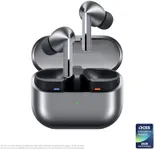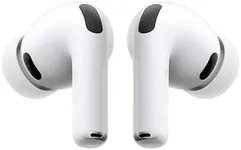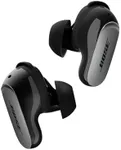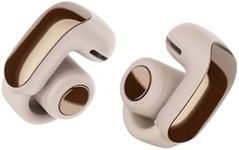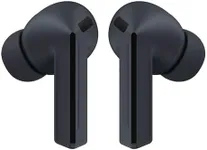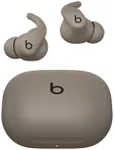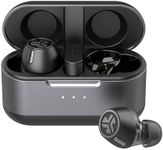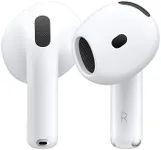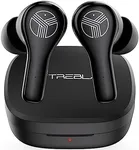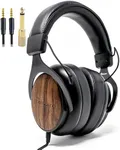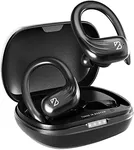Buying Guide for the Best Wireless Earbuds
Choosing the right wireless earbuds can make a significant difference in how you enjoy music, podcasts, calls, and even workouts. There are many options on the market, each with its own strengths. To make a good decision, start by thinking about where and how you plan to use your earbuds most often – do you need them mainly for exercise, commuting, work calls, or just casual music listening at home? Your lifestyle and preferred features should guide your decision-making process. Understanding the key specifications will help you narrow down your choices and find a pair that fits your needs perfectly.Battery LifeBattery life refers to how long the earbuds can operate on a single charge, as well as the extra power provided by the charging case. This is important because it determines how long you can use your earbuds before having to recharge them. Lightweight, compact models might offer around 4-5 hours per charge, while others can stretch up to 10 hours or more. The charging case often provides additional charges, extending total usage to anywhere from 20 to 40+ hours. If you typically use your earbuds for long listening sessions, or can’t recharge often, go for higher battery capacity. For casual, brief use, a lower battery spec should be sufficient.
Sound QualitySound quality describes how clear and rich the audio produced by the earbuds is, including bass, midrange, and treble frequencies. This is important because it directly affects your enjoyment of music and calls. Some earbuds focus on deep bass, others on clear vocals, and some offer a balanced sound. Generally, if you care most about music detail and immersiveness, look for models known for balanced, high-quality audio. If you’re not too picky and mostly listen to podcasts or make calls, even basic sound should be fine.
Comfort and FitComfort and fit refer to how the earbuds sit in your ears and whether they come with different tip sizes or shapes to match your ear. This is important to prevent discomfort or the earbuds falling out, especially during movement or exercise. There are two main shapes: in-ear and semi-in-ear. In-ear models tend to block more noise but may not suit sensitive ears, while semi-in-ear are often lighter but may not fit as securely. If you plan on long listening sessions or intense activity, prioritize adjustable, secure fit and lightweight design suited to your ear size and shape.
Noise CancellationNoise cancellation (often called ANC for Active Noise Cancellation) is a feature that reduces unwanted background sounds so you can focus on your music or calls. This can be very important in noisy environments like airplanes, trains, or busy offices. There are generally three levels: no noise cancellation, passive (which just blocks some noise with earbud design), and active (which electronically cancels out noise). If peace and quiet is a priority for you, or you’ll use earbuds in loud places, choose models with active noise cancellation. If you are mostly in quiet environments, you might not need this.
Controls and FeaturesControls and features describe how you interact with the earbuds – most offer touch controls or buttons for play, pause, skipping tracks, and answering calls, and some include voice assistant support or app-based customization. Simpler controls can be easier for basic use, while more advanced controls let you do more without grabbing your phone. Think about whether you want simple, easy tap controls or prefer having more advanced options, such as volume adjustment, custom shortcuts, or even fitness tracking.
Call QualityCall quality determines how well your voice and the other person's voice come through during phone and video calls. Some earbuds include multiple microphones or noise-reducing tech focused on clearer conversations. If you frequently use your earbuds for calls or remote meetings, look for models with multiple mics and reviews emphasizing strong call clarity. If calls aren’t your main use, average call quality should suffice.
Water and Sweat ResistanceWater and sweat resistance indicates how well the earbuds can withstand exposure to moisture, sweat, or light rain, usually measured by an IP rating (like IPX4, IPX7, etc.). This is important for people using earbuds during workouts, outdoor activities, or in humid environments. Lower ratings are fine for light everyday use, but for regular exercise or use in wet weather, look for higher ratings for better durability.
ConnectivityConnectivity mainly refers to the wireless connection type (usually Bluetooth) and how reliably the earbuds stay connected to your phone or device. Higher Bluetooth versions offer more stable and efficient connections. Some earbuds allow pairing with multiple devices, which is useful if you switch between, say, a phone and a laptop. If you often move between devices or need reliable performance even far from your phone, look for newer Bluetooth standards and multi-device support.
